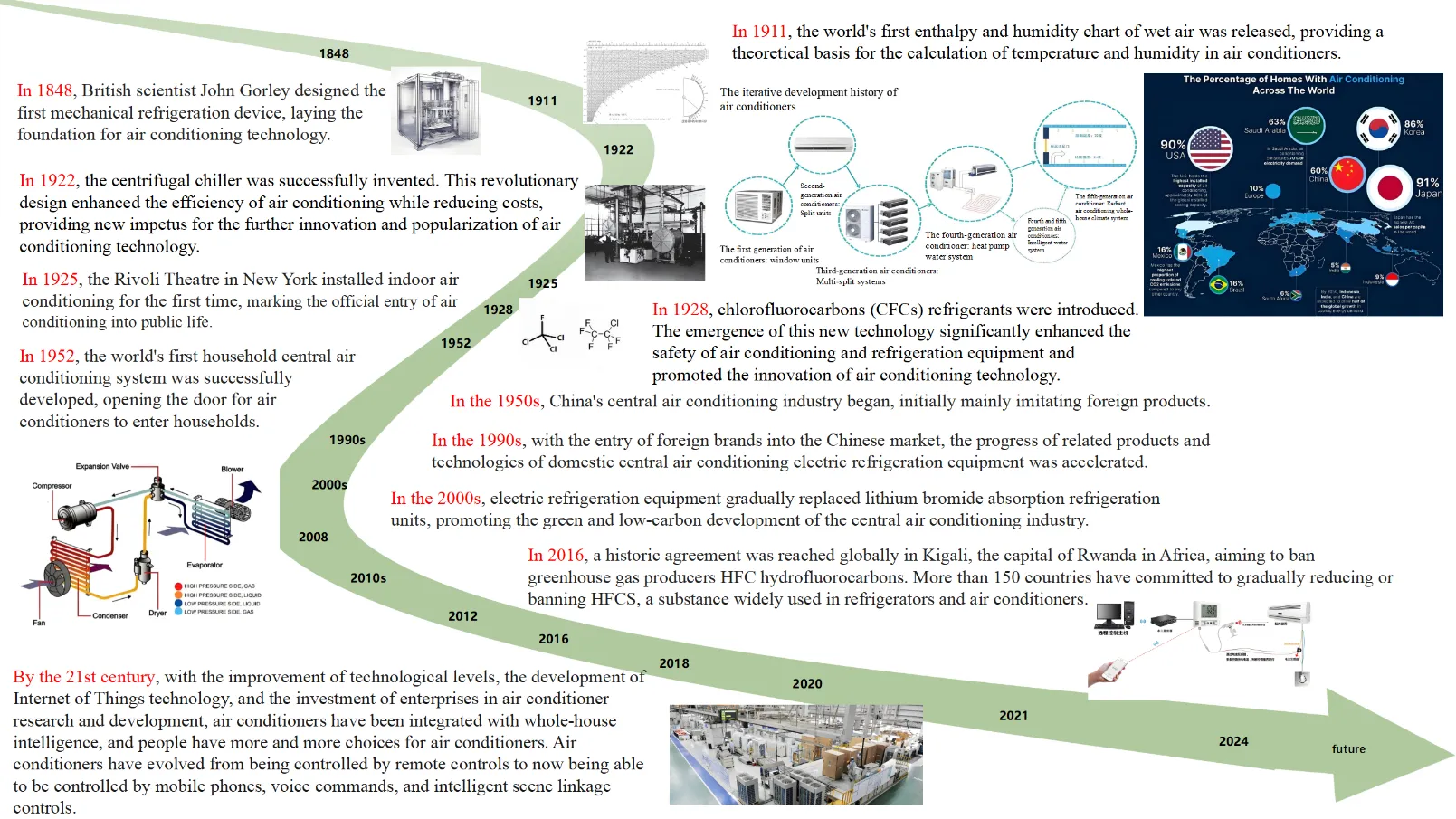Found 469 results
Open Access
Case Report
11 August 2025Transition to Hydrogen Aviation: A 2030–2050 Scenario Performance Analysis for an Airline
This study presents a realistic hypothetical scenario-based analysis of an airline’s transition from kerosene to hydrogen propulsion between 2030 and 2050, under a Techno-Economic Environmental Risk Assessment (TERA) framework. Two scenarios are modelled: a baseline fleet scenario using only conventional CMRT and CLRT aircraft, and a hydrogen transition scenario that introduces hydrogen-powered Airbus ZEROe and HVLMR aircraft starting in 2035. Using detailed aircraft (Orion from Cranfield) and jet engine (TURBOMATCH from Cranfield) performance simulations across 85 global routes, fuel consumption, energy demand, emissions, and operating costs are assessed. Strategic hydrogen hubs at London Heathrow and Neom Bay enable network feasibility for aircraft with limited range. Key findings show that the hydrogen scenario reduces total fuel mass consumption by approximately 28%, due to hydrogen’s high specific energy, and cuts CO2 emissions by 49%, assuming green hydrogen usage. However, it also results in a 9.6% increase in energy demand and ~15–20% higher cumulative operating costs, driven by greater depreciation, maintenance, and fuel price premiums. While the hydrogen transition introduces higher upfront and operational costs, it offers long-term environmental benefits and compliance with net-zero aviation goals. The study concludes that hydrogen aviation holds strategic promise but faces significant technical challenges, particularly due to the immaturity of hydrogen storage and propulsion systems. Realising this potential will require coordinated investment in infrastructure, policy support, and adaptive route planning.
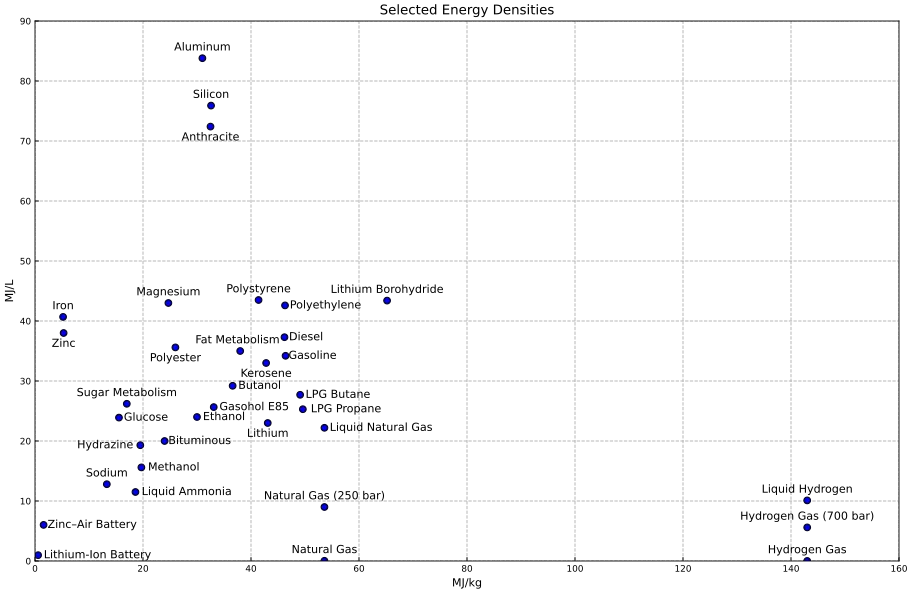
Open Access
Article
11 August 2025Noble Metal Sites Modulated Cyano-COF for Boosted Photocatalytic O2 to H2O2 Production
Photocatalytic O2 reduction to hydrogen peroxide (H2O2) is a promising chemical synthesis pathway with green property. However, the development of efficient and stable photocatalysts that enable high selectivity and activity remains an urgent scientific challenge. Herein, cyano-based covalent organic framework (cyano-COF) photocatalysts modulated by noble metal sites (i.e., Pt, Pd, Au, and Ag), denoted as Pt/cyano-COF, Pd/cyano-COF, Au/cyano-COF, and Ag/cyano-COF, are designed and synthesized. The cyano-group (-C≡N), acting as a strong electron acceptor, interacts with the noble metal sites to establish an efficient electron transfer pathway, which facilitates the separation of photogenerated charges, optimizes the reaction pathway, and thus enables boosted generation of H2O2 via the two-step single electron oxygen reduction reaction (O2→·O2−→H2O2). Under visible irradiation, Pt/cyano-COF, Pd/cyano-COF, Au/cyano-COF, and Ag/cyano-COF deliver superior H2O2 production rates of 903 ± 24, 1073 ± 35, 963 ± 9, and 851 ± 56 μmol·g−1·h−1, respectively, much higher than that of pristine cyano-COF (577 ± 69 μmol·h−1·g−1). This study offers profound insights into the mechanism of noble metal sites in the solar-driven selective reduction of O2 to H2O2 synthesis.
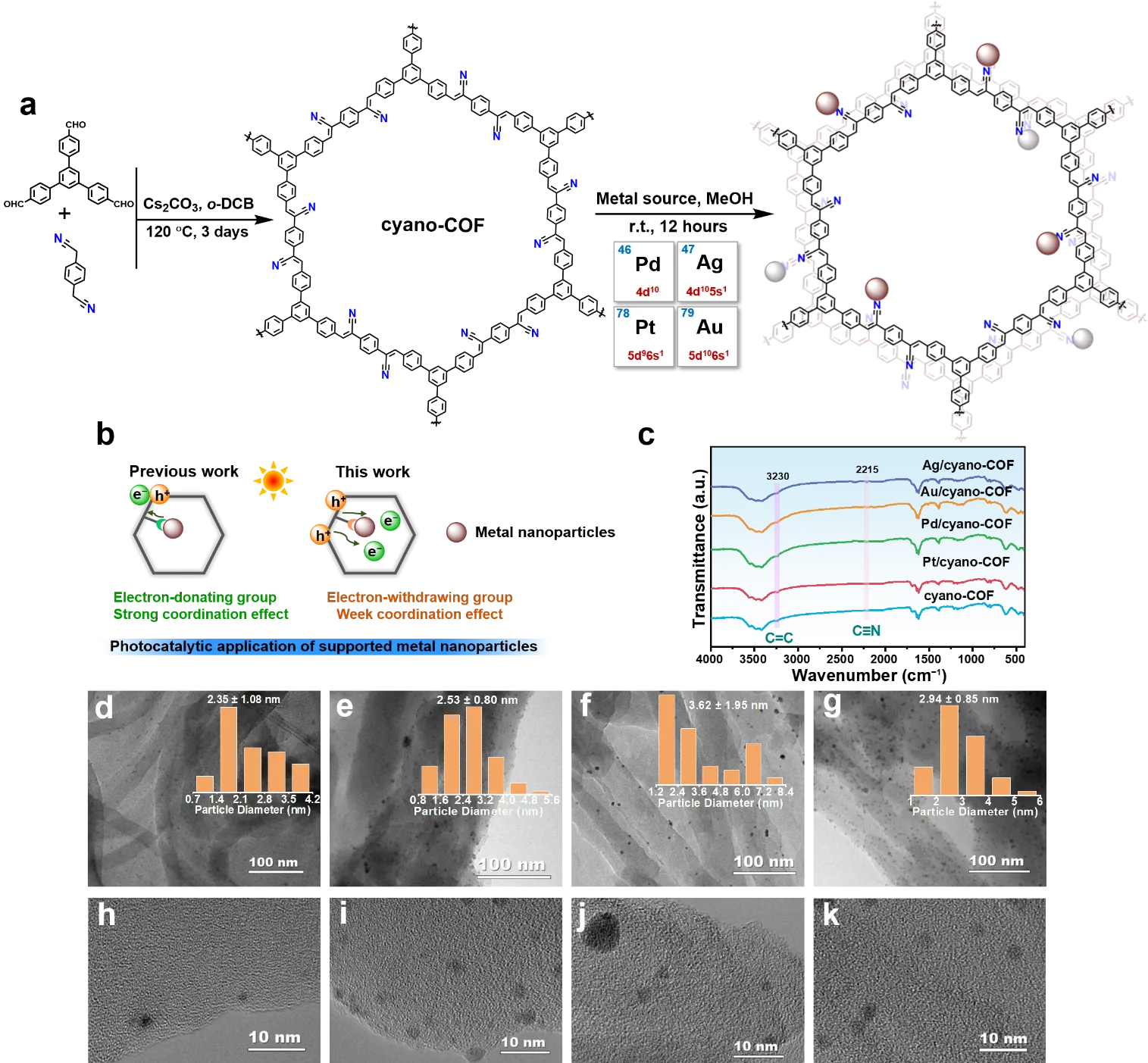
Open Access
Article
07 August 2025Daoism, Confucianism, and the Rights of Nature: Transformative Relations in Ecological Governance
Confronting a global ecological crisis, this paper argues that conventional anthropocentric governance models, rooted in instrumental rationality, are inadequate. Drawing on Edoardo Ongaro’s concept of an integrative approach to an ontological and political philosophical understanding of public governance and administration, it proposes a relational framework for ecological governance by integrating the Rights of Nature (RoN) movement with classical Chinese philosophical traditions. The study emphasizes the complementary foundations offered by Daoism, specifically its concepts of ziran (natural spontaneity) and wuwei (non-coercive action) which support decentralized governance aligned with ecological self-organization, and Confucianism, particularly tian ren he yi (unity of heaven and humanity), which embeds ecological stewardship within moral self-cultivation (ren) and social duty (li). Comparative case studies highlight cultural complexities in implementing such relational governance. This paper outlines a tripartite pathway for building transformative capacities within this relational framework and discusses policy implications.
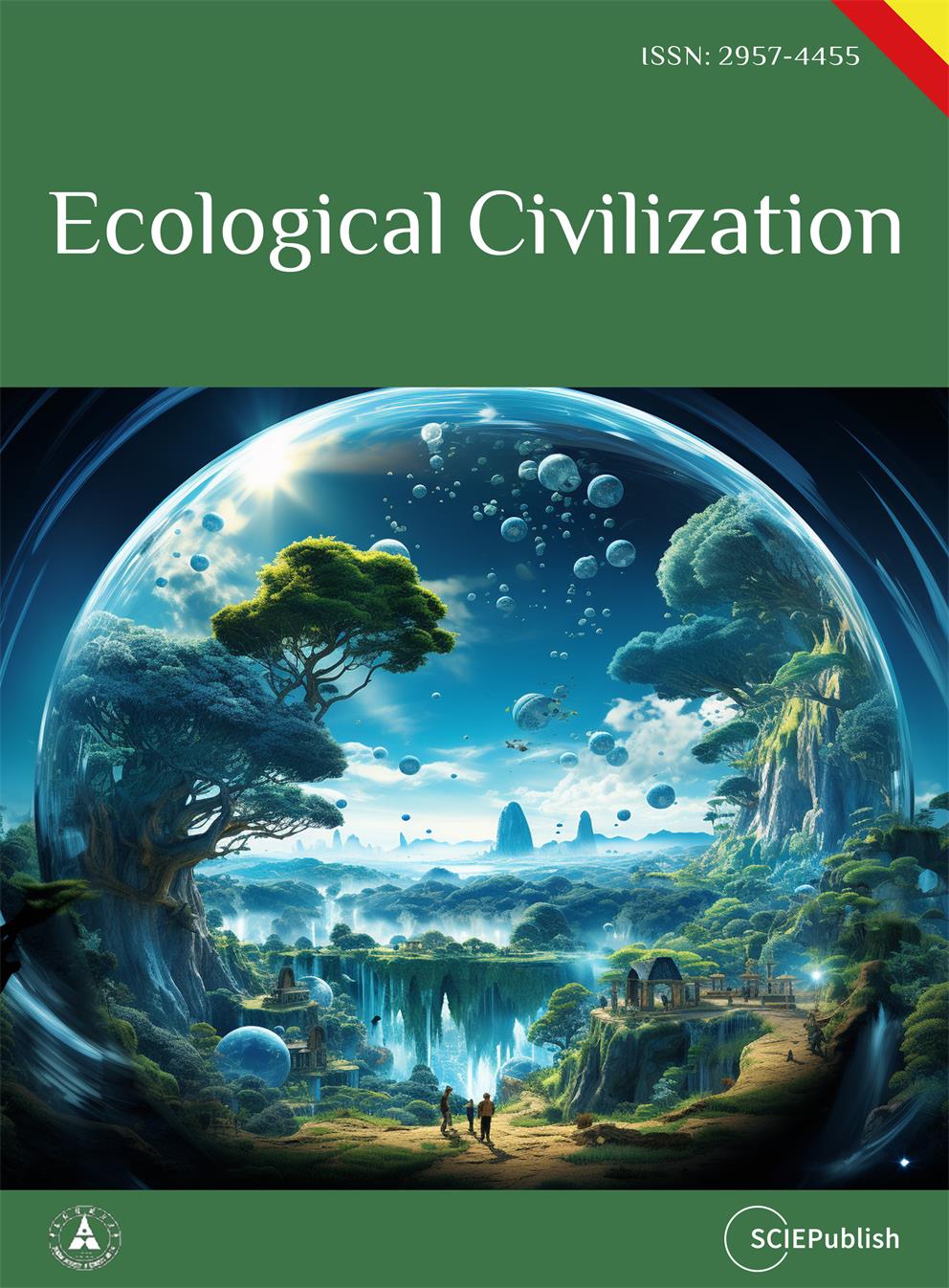
Open Access
Review
07 August 2025Progress in the Study of Transition Metal-Based Carbon Nanotube Composites for Electrochemical Hydrogen Evolution
Hydrogen is an efficient, clean, and economical energy source, primarily due to its remarkably high energy density. Electrolytic water is considered an attractive and feasible method for hydrogen production. The high cost and scarcity of traditional Pt-based catalysts limit their large-scale application. Transition metals (TMs)-based composites, particularly those integrated with carbon nanotubes (CNTs), have emerged as promising alternatives due to their high conductivity, surface area, and ability to enhance the catalytic properties of TMs. Currently, there is no systematic summary of TMs-based CNTs composites for electrochemical hydrogen evolution reaction (HER). In this review, the main synthesis methods, including the wet chemical method, chemical vapor deposition, and electrochemical techniques, were first summarized. Then, the latest advancements of TMs/CNTs composites, focusing on their structure, electronic properties and superior HER catalytic performance, were systematically discussed. The catalytic mechanisms are meticulously examined, with particular emphasis on the pivotal role of CNTs in enhancing charge transfer and stabilizing metal nanoparticles. Finally, this review addresses the current challenges and future development directions for HER catalysts.

Open Access
Communication
05 August 2025Autoimmune Adverse Events Following Immunization
Adverse events (AEs) following immunization can include autoimmune AEs for some vaccines and combinations. This study retrospectively examines autoimmune AEs to detect safety signals for vaccines and concomitantly administered vaccines in the Vaccine Adverse Event Reporting System (VAERS) database. This study focuses on which vaccines were administered or coadministered for retrospective analysis of analyzed autoimmune AEs. Observed results include multiple autoimmune AE safety signals: human papillomavirus (HPV) Cervarix, HPV Gardasil, hepatitis (Hep) A + Hep B (Twinrix), Lyme disease (LYMErix), coadministered COVID-19 Moderna + Pfizer-BioNTech, Hep B (Engerix-B), and others. Identified arthritis AE safety signals include Lyme disease (LYMErix), rubella (Meruvax II), HPV (Cervarix), Anthrax (Biothrax) + Smallpox (Dryvax), and more. Coadministered DTaP + HepB + IPV (Pediarix) + Hib (Pedvaxhib) + Pneumococcal (Prevnar13) + Rotavirus (Rotarix) may be exhibiting synergy AE rate for eczema AEs. Thirty five influenza vaccines were observed with Guillain–Barré syndrome (GBS) AE safety signals, plus additional safety signals for multiple other vaccines. influenza (H1N1 monovalent) (GSK) exhibits a very high rate for narcolepsy AEs.
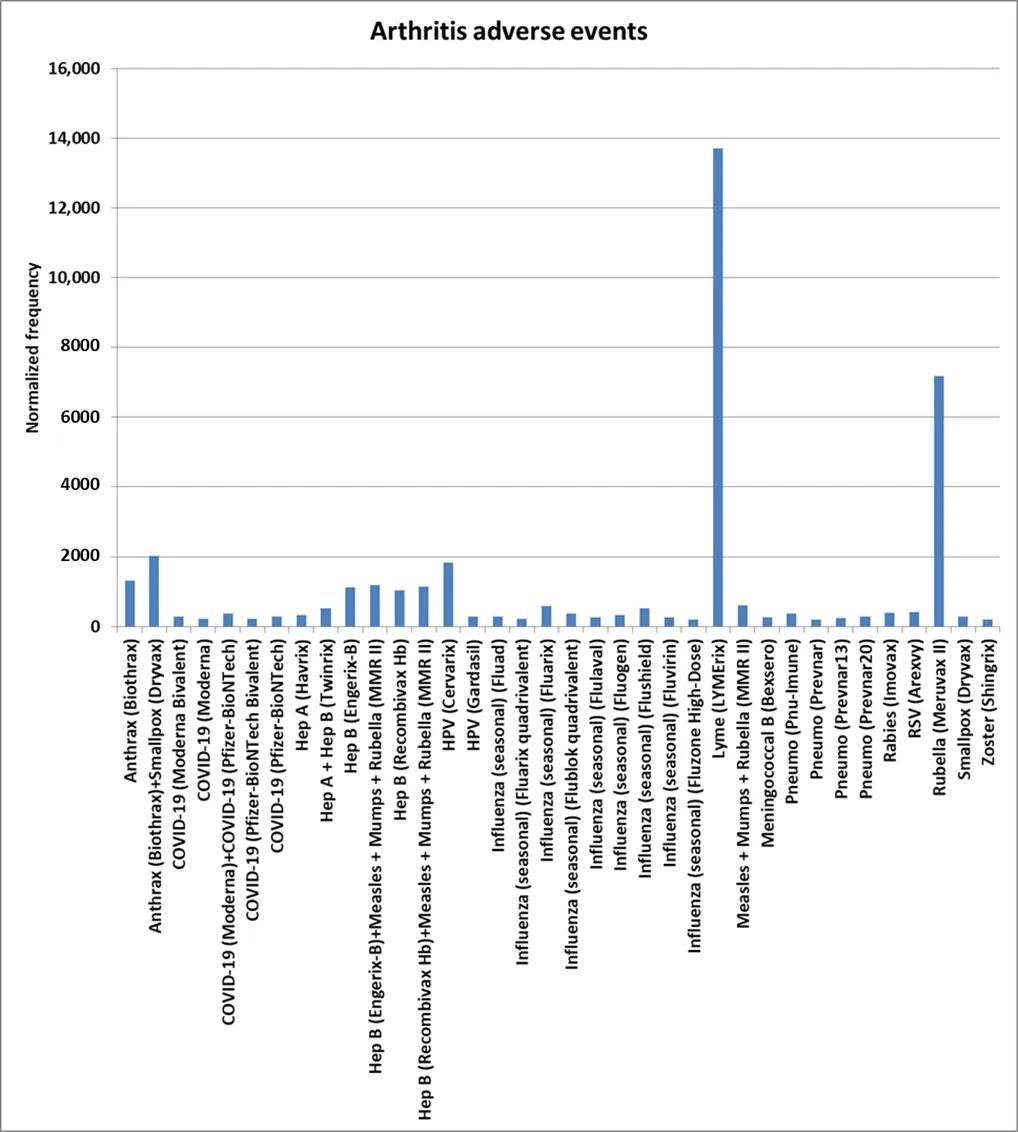
Open Access
Article
01 August 2025Eastern Lubber Grasshopper Extract-Inspired Silver Nanoparticles Selectively Inhibit Methicillin-Resistant Staphylococcus aureus
Silver nanoparticles (AgNPs) were synthesized using a protein/polypeptide-rich aqueous extract from the Eastern lubber grasshopper (Romalea microptera), as a natural reducing and capping agent. The resulting AgNPs exhibited relatively uniform sizes (10–60 nm) and were characterized by Fourier Transform Infrared Spectroscopy (FTIR), Ultraviolet-visible (UV-Vis) spectroscopy, Transmission electron microscopy (TEM), and Scanning Electron Microscopy (SEM). Disk diffusion tests against five bacterial strains (Methicillin-resistant Staphylococcus aureus (MRSA), Burkholderia cenocepacia, Klebsiella pneumoniae, Pseudomonas aeruginosa, and Escherichia coli) demonstrated that the insect-extract-induced AgNPs selectively and significantly inhibited MRSA growth, with an average value of zone of inhibition of 9.16 ± 1.11 mm (n = 4). Statistical analysis confirmed the superior antibacterial activity of the Eastern lubber grasshopper-derived AgNPs against MRSA compared to citrate-capped AgNPs and free silver ions. These findings reveal the potential of insect-derived AgNPs as selective, green-synthesized antibacterial agents with enhanced efficacy and reduced side effects, particularly against antibiotic-resistant pathogens.
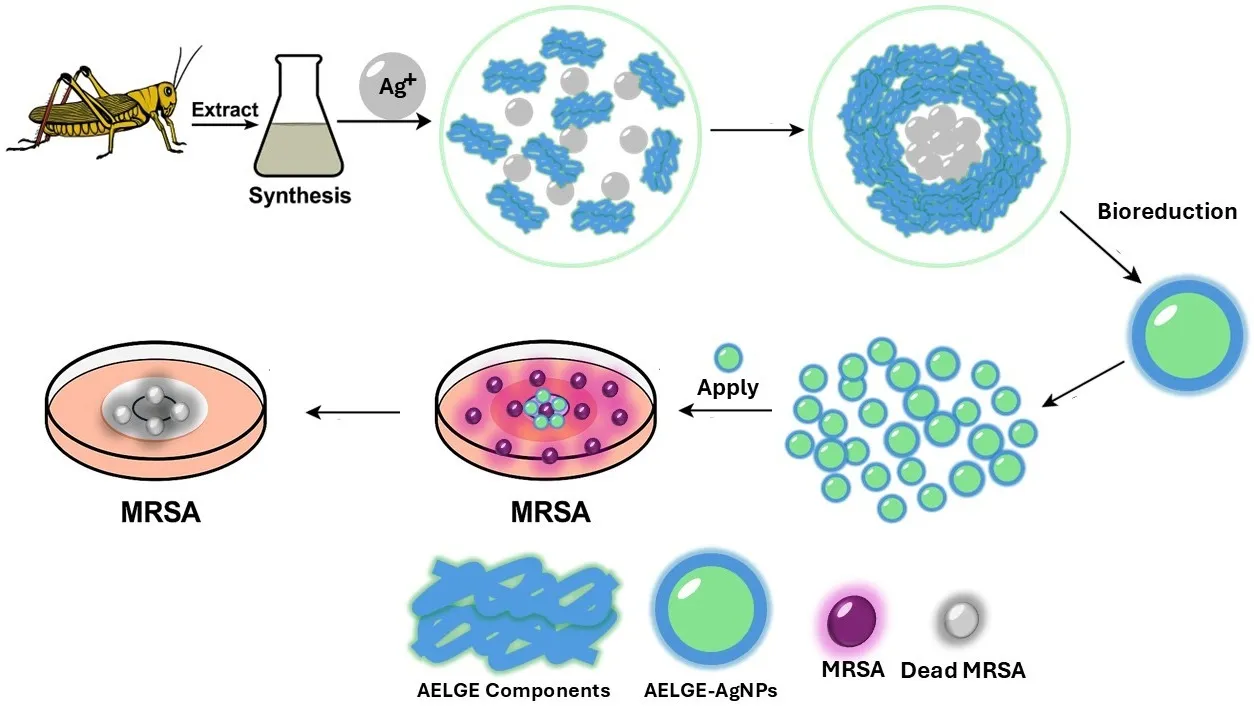
Open Access
Article
31 July 2025Experimental Study on the Strength Distribution and Pore Distribution of Industrial Pellet and DRI
Against the backdrop of the “dual-carbon” goals driving the steel industry's transition toward hydrogen metallurgy, the hydrogen-based shaft furnace process has emerged as a focal point due to its low-carbon emissions. This study employs compression testing, mercury intrusion porosimeter, and industrial computed tomography characterization to compare the mechanical properties and pore structures of industrial pellets and direct reduced iron (DRI). The results show that the compressive strength and mass specific breakage energy of DRI are lower than those of pellets, and the breakage characteristic parameters at the same particle size are lower, making it more prone to breakage; the compressive strength of both increases with the increase of particle size, the mass specific breakage energy decreases with the increase of particle size, and the strength growth rate of pellets is faster. In terms of pore structure, pellets are mainly composed of uniform macropores of 3428 nm with a porosity of 22.3%; DRI has a porosity of 48.8%, mainly composed of 3431 nm macropores and 831 nm micropores, with a low tortuosity index, which is conducive to gas diffusion. This study provides parameters and theoretical basis for modeling of burden movement and crushing in shaft furnace.

Open Access
Article
31 July 2025Single Shift Segmentation Improves Moderate Flood Estimates under Nonstationary Conditions across the United States
Precipitation, particularly at high quantiles, has been reported to increase in various regions across the globe, raising pluvial flood risk. One of the main challenges in reliable flood frequency analysis is handling nonstationarity arising from climate variability or anthropogenic disturbances such as land use/cover change or river regulation. To separate these nonstationary footprints, we analyzed annual maximum peak flow records from 18 reference (minimally disturbed) and 66 non-reference stream gages, each with more than 100 years of flood records across the United States. Next, we used a nonparametric Pettitt test to identify statistically significant change points. When present, the flood record was split into pre- and post-change segments with a Log-Pearson III distribution fitted to each. Depending on the region and site type, using a segmented record improved the quantile estimate. At the majority of reference sites, post-change data produced the highest flood quantiles, reflecting recent climate-driven nonstationarity. Conversely, at several non-reference sites, pre-change data returned larger estimates, indicating that long-standing anthropogenic disturbances can attenuate the signal of climatic variations. Our study confirms that fitting a flood frequency model to the segment that minimizes nonstationarity, rather than the entire record, returns more reliable estimates for moderate flood magnitudes of up to a 25-year return interval. The approach highlights the need to understand the population from which flood records are extracted, to separate those populations where appropriate, and then fit a statistical distribution. This practical approach offers a simple thought process for updating moderate flood forecasts to guide infrastructure design or rehabilitation in the current dynamic environment, an era of constant change that needs flexibility in everything we design.

Open Access
Article
30 July 2025Effects of Virtual Reality (VR) Rehabilitation on Mental Health in SCI Patients: A Randomized Controlled Trial
This randomized controlled trial investigates the effects of virtual reality (VR) rehabilitation on mental health in spinal cord injury (SCI) patients. Seventy-four participants were randomized to 12 weeks of VR-based or traditional rehabilitation, with mental health assessed via the Hospital Anxiety and Depression Scale (HADS) and World Health Organization Quality of Life-BREF (WHOQOL-BREF). The VR group showed significantly greater reductions in HADS scores at 6 weeks (mean change: −4.2 vs. −2.4, p < 0.001) and 12 weeks (mean change: −6.4 vs. −3.9, p < 0.001), with a large effect size (Cohen’s d = 1.21). VR also improved WHOQOL-BREF psychological health scores (+13.5 vs. +6.4, p < 0.001), self-esteem (+7.2 vs. +3.2, p < 0.001), and sleep quality (−5.1 vs. −2.8, p < 0.001). Subgroup analysis indicated greater benefits for younger patients and those with incomplete SCI. VR rehabilitation outperforms traditional methods in enhancing mental health, supporting its integration into comprehensive SCI care.
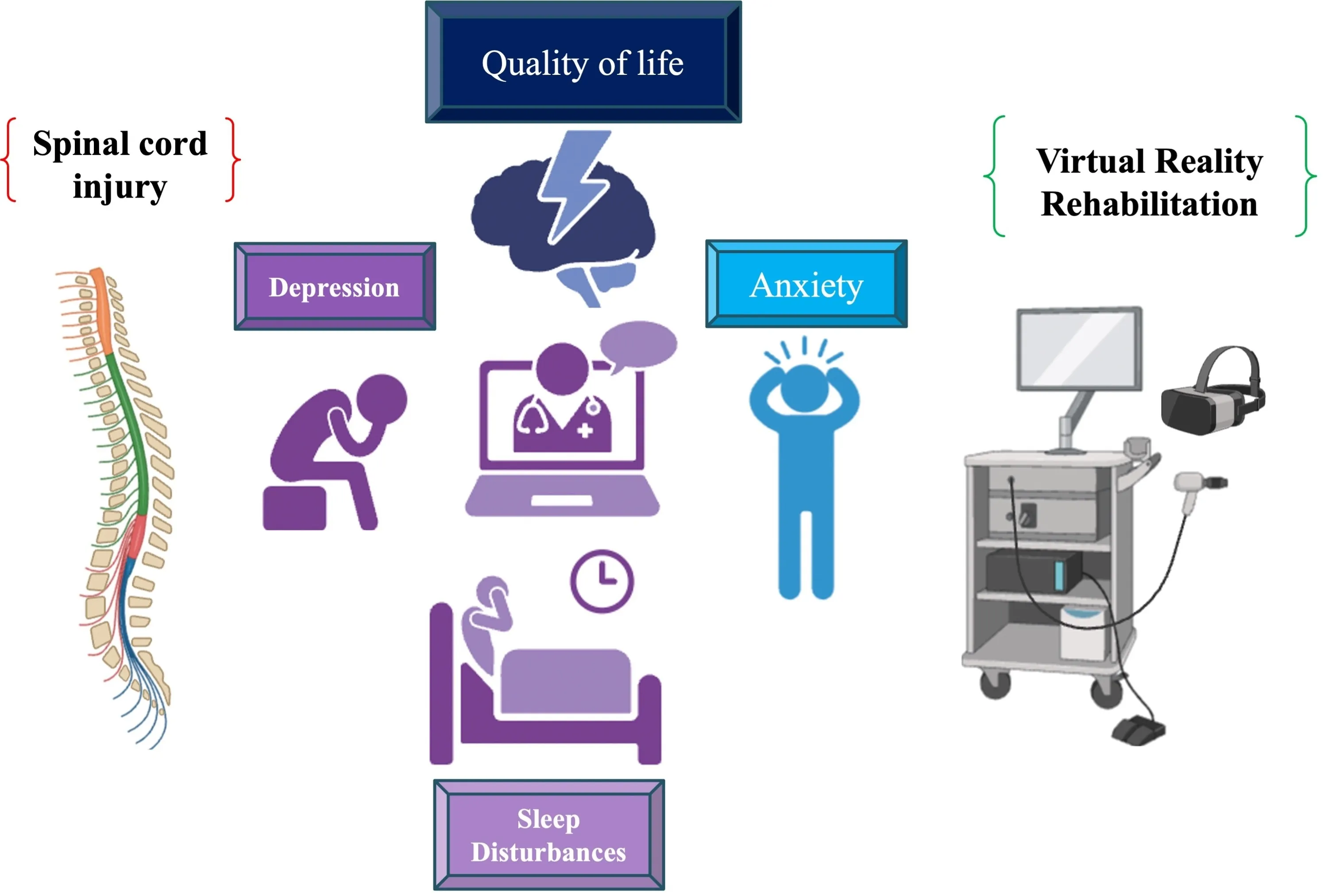
Open Access
Article
29 July 2025Air Conditioning Heat Exchanger Intelligent Production Line: Design Methodologies and Applications
As a key component in modern building environmental control systems, the production quality and performance of multi-split central air conditioning systems directly influence the comfort, energy efficiency, and operational stability of buildings. However, the current manufacturing process primarily relies on a combination of traditional manual labor and automated equipment, resulting in low efficiency, high energy consumption, and limited automation. This paper first presents an optimized design for an intelligent manufacturing production line for multi-split central air conditioning heat exchangers to address these issues. It details the design of key systems for the intelligent production line and ensures continuous production and processing. Additionally, the paper analyzes the production process of the intelligent manufacturing line, with particular emphasis on the mechanism of the heat exchanger tube expansion process. Furthermore, it designs the fixture structure of the transfer robot for each process in the production line and discusses the principles of workpiece positioning and clamping. Utilizing technologies such as sensor networks, PLC, and industrial Ethernet, the system completes the closed-loop process of perception, transmission, analysis, decision-making, and execution within the production line, enabling transparency, fault predictability, and automated management. The results show that the intelligent assembly production line has significantly improved the assembly efficiency, achieving a 300% increase in the daily production capacity of a single line. While enabling the continuous and intelligent production of multi-split central air conditioning heat exchangers.
